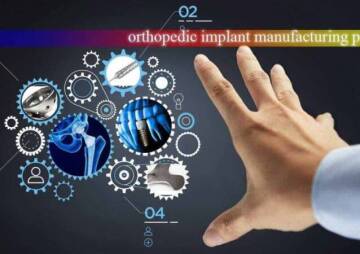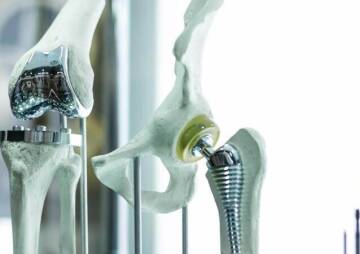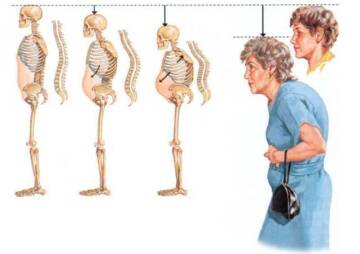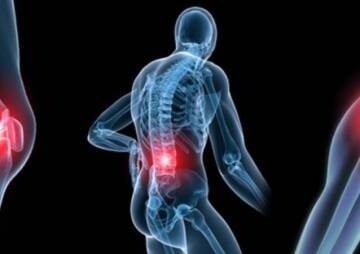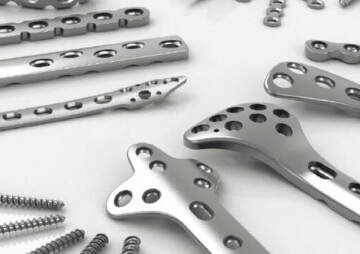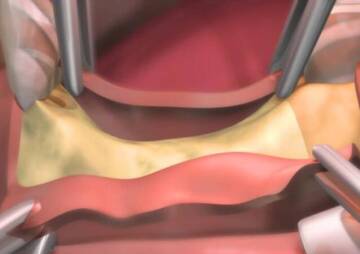-
Category
Craniomaxillofacial Surgery
Orthopedic Surgery
Spine Surgery
Orthopedic Implants
Hip Surgery
Knee Surgery
Pectus Excavatum
Bone Graft
Disinfectants
Healthcare
A brief look at the history of orthopedics
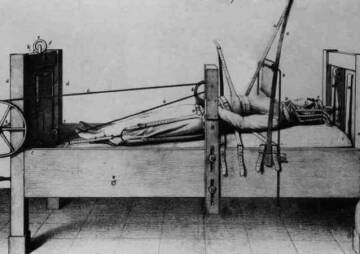
Orthopedics is an old science and has undergone many changes to reach modern science. Let's walk together in the history of orthopedic science.
Bone is a living and functional part of the body. Broken or deformed bone can grow and repair, so bone that is congenitally or accidentally deformed can be restored to its natural state through surgery, splinting, and other treatments. All of these methods that lead to the correction of the skeleton of the body are called orthopedics.
Orthopedics is an old science and dates back to the Neolithic period. Let's walk together in the history of orthopedic science.
Orthopedics and its concept
The modern orthopedic term comes from the old word orthopedics. Orthopedics is a combination of the Greek words orthos meaning smooth and without curvature and paidios meaning child. In 1741, a French physician named Nicholas Andre published a book on the prevention and correction of skeletal abnormalities in children. He chose the word orthopedics as the title of his book, which has since become common in the treatment of all types of bone healing problems. Interestingly, Andre's book shows a picture of a crooked young tree attached to a flat, firm piece of wood. This image became a global symbol of orthopedic surgery.
Although orthopedics seems to be a relatively new science, there is some evidence that orthopedics is an ancient art. Orthopedic history can be classified into three periods.

Ancient orthopedics
There is very little evidence, but this evidence suggests that orthopedics dates back to early humans, and that modern orthopedic pathology, such as fractures and amputations, existed in primitive times. Traces of the use of splints to treat fractures have also been seen in the remnants of that era.
Subsequent civilizations also had creative methods for managing orthopedic injuries. For example, the Shoshone Indians, who lived around 700-2000 BC; They used splints made of wet skin. Some South Australian tribes used dried clay such as gypsum.
Mummified objects, murals and hieroglyphs also depict some of the orthopedic equipment used by the ancient Egyptians. The ancient Egyptians had newer ways of splinting. Traces of their splinting methods were discovered in 1903. They were examples of how the thighs and arms were splinted to 300 BC. Other examples of splints made of bamboo and cloth-filled straws have also been found in mummies. Or works showing that the Egyptians used a cane to facilitate movement.
Edwin Smith Surgical Papyrus is an ancient Egyptian medical text. The papyrus, found in tombs, is about five meters long and is thought to date back to at least 1600 BC. The papyrus describes 48 cases of injury, fracture, wound, dislocation, and tumor. Among the treatments mentioned in this papyrus, we can close the wounds with sutures, bandages, splints, poultices, prevent and improve the infection with honey and stop the bleeding with raw meat.
.jpg)
The Greeks also had a great deal of knowledge about fractures and dislocations and wrote many books on the subject. Their knowledge in the field of orthopedics was extensive. Scoliosis was recognized by the ancient Greeks as a disease and many attempts were made to treat it but often failed.
In the twelfth century, the Italian school of Salerno used bands hardened with a mixture of flour and eggs as plaster to hold the bones in place.
Medieval Europeans used gypsum made from egg whites, flour, and animal fats.
During the medieval wars, field surgeons used horse-soaked clothing to make early splints on injured limbs. Supports broken or damaged limbs when clothes are dry and stiff.
The growth of orthopedics from the eighteenth to the twentieth century
When orthopedics began as a specialty, it focused more on caring for children with disabilities with spinal and other organ disorders. The orthopedic institute in Orbe, Switzerland was founded in 1780 to treat skeletal abnormalities in children with disabilities.
For a long time orthopedics was just a physical specialty. Doctors used physical methods to straighten and replace the bones to deform the bones and repair the joints, and then hold the bone in place until it was treated with a cast and brace. Pelvic fractures were among the most commonly treatable injuries, and doctors neglected to treat them. The patient was only asked to rest and give the pelvis a chance to heal. However, due to improper placement of the pelvic bone, the patient usually has problems walking, bending, and sometimes disability.

In the 19th century, thousands of children became infected with polio, many of whom needed special medical care.
In the 1930s, special nails were invented to hold broken and damaged bone pieces together so that they could be repaired better and more regularly. A few years later, metal devices were invented to replace the femoral head, which forms part of the hip joint, and this part often did not heal after a fracture. Later, the hip joint was completely rebuilt to replace the patients' missing joint.
These advances continued for years until the latest methods of orthopedics were used today. Currently, orthopedists continue to use physical methods to align fractures and repair joints, and splints and casts to hold damaged bones in place. But auxiliary methods such as using X-rays to accurately diagnose the affected area and examine the stages of bone healing are also used.
In fact, the twentieth century can be considered a major turning point for orthopedics. The need to rehabilitate war-wounded soldiers, the discovery of X-rays, and in the following decades the production of penicillin and other antibiotics, as well as joint replacement technologies and diagnostic tools, all contributed specifically to the development of orthopedics.
Advances in the modern era
Today, it is estimated that up to 80% of orthopedic treatments are outpatient.
Orthopedic patients have benefited from technical advances such as joint replacement and arthroscopy, which allow the orthopedist to see inside the joint. This treatment may be done in conjunction with diagnostic tests such as blood tests, X-rays, or other tests. Treatment requires medical advice, medication, the use of splints, physiotherapy, dietary changes, and surgery in critical cases.
In many cases, if orthopedic surgery is needed; No more open incision surgery. Flexible arthroscopes can be inserted into joints such as the knee to identify and treat the nature of bone and joint damage. Arthroscopes can be used on all types of joints. Even the smallest joint of the jaw. In arthroscopic surgery, the surgeon inserts a very small diameter arthroscope into the joint through a small incision. The arthroscope carries fiber optics and a video camera attached to it, which displays images on a monitor screen. The surgeon inserts other surgical instruments through an incision and repairs the joints.

One of the most important advances in imaging over the past three decades has been the increase in the resolution of ultrasound imaging, which has made it easier to detect abnormalities. The development of digital X-rays has also been a factor that has made it possible to improve imaging performance as well as reduce the use of X-ray films. The obvious advantages of this system are less storage space and higher quality images.
3D models of CT and MRI allow orthopedic surgeons and manufacturers to provide patients with implants that are specific to their own physiology.
Commercial orthopedic development
As the world's aging population grows, the need for orthopedic equipment has also increased. The orthopedic device market is also more inclined to physical goods. For example, the focus of the medical market is on implants, instruments and intelligent systems. This is the result of the combined effect of constant pricing pressure and growing market demand. But it is necessary to reduce the production costs of this equipment by some means. For this reason, orthopedic medical product companies need to think of ways to reduce costs, both in terms of production and distribution worldwide.
Manufacturers who can produce a multi-purpose, yet simple and user-friendly device that reduces costs for themselves and the buyer will be successful in the competitive market. In this case, the quality of work of these products and producers will definitely increase.

However, there are many well-known companies in the field of orthopedics and its products. Some of them are very well known and some less so. Manib Company is one of the companies that introduces and distributes products of high quality manufacturers in different price ranges. To check the orthopedic products of Manib company, you can see the list of products.
